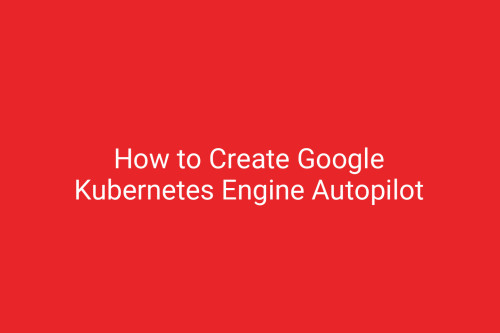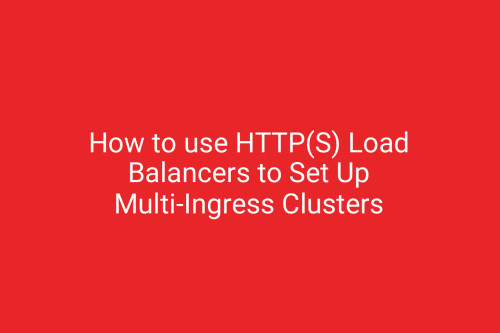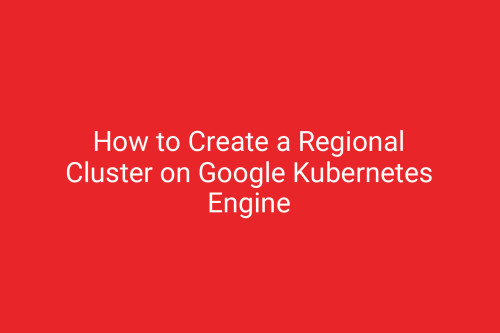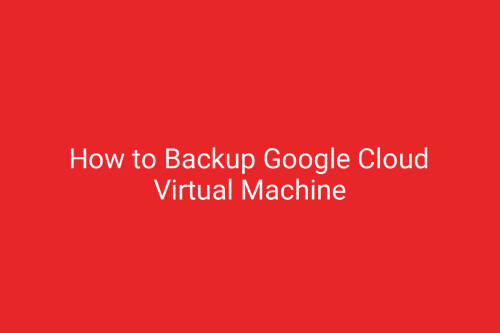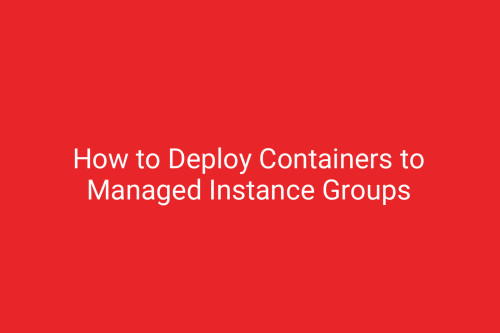Google Cloud
How to Create Google Kubernetes Engine Autopilot
The GKE Autopilot comes in handy if you want to run your applications on Kubernetes but would not wish to manage the nodes, images, node pools, networking, alongside a host of operational components of the typical Kubernetes cluster. It technically lets you run your applications on Kubernetes but without worrying about managing or operating the cluster on its own. Run your applications on the GKE Autopilot as many of its operational aspects are abstracted away. It only leaves you with the basic
How to use HTTP(S) Load Balancers to Set Up Multi-Ingress Clusters
Your web application uses GCKE clusters to operate efficiently but these clusters are spread across a variety of regions. You need a way to reliably direct users’ traffic to the nearest cluster to their geographical location. The best way to achieve this is with a single HTTP(S) load balancer such as Anthos’ Multicluster Ingress tool. It directs user traffic based on its origin so that Kubernetes clusters don’t get bogged down with unnecessary reroutes. Prerequisites Ensure the following A
How to Resize a Google Kubernetes Engine Cluster
To make sure the clusters you launch on Kubernetes always perform optimally, take a moment to check their node numbers. If necessary, redistribute some nodes to spread the load evenly between clusters and better support your browsing habits. Prerequisites Activate Kubernetes Engine API Make sure your cluster is active before you try to resize it Resizing a Cluster Step 1 - Launch Google Cloud Console and log in. Step 2 - Select Compute on the primary menu. Then, select Kubernetes Engine. Step 3
How to use locust for load testing
Locust provides a quick and easy way to perform distributed load tests on VMs and other applications. Unlike with some other load testing tools, users can monitor the process and identify bottlenecks or other weaknesses as they happen. Plus, Locust is compatible with all major architectures and server infrastructures. Step 1 - Launch Google Cloud Console and log in. Step 2 - Select Compute on the primary menu. Then, select Kubernetes Engine. Step 3 - Select the Create option right at the top of
How to Make use of a MongoDB Database with the StatefulSets on Google Kubernetes Engine
You wish to run the MongoDB on the Google Cloud Kubernetes Engine that demands access to the persistent disk. Given that MongoDB demands a persistent disk, you should deploy it as a stateful application. This demands that you make use of the StateFulSet controller to roll out the MongoDB for a persistent identity whenever the pods have to be rescheduled or started out afresh. These steps will certainly help out: Step 1 : Sign in to the console of Google Cloud Step 2 : Set up the Google Cloud she
How to Create a Regional Cluster on Google Kubernetes Engine
You intend to run an application on the Kubernetes but want this to happen across two or more zones within a region. You cherish the availability of your applications over and above the flexibility that may often pop up with a zonal Kubernetes cluster. Run this application in the regional Kubernetes cluster. Regional clusters generally make for higher availability, zero downtime upgrades, and fault tolerance. All these make for resilient applications that are scattered across multiple zones with
How to Create a Zonal Cluster on Google Kubernetes Engine
If you want to run an application on Kubernetes within a single zone or region, you have to create and upgrade the cluster quickly. For this to happen, you have to care less about the availability and the placements of clusters closer to the likely users. Run your application on the zonal Kubernetes cluster. From one single control plane, you will manage the Kubernetes cluster. It is hence quite easy to start out in. Follow these steps to achieve that end: Step 1 : Sign in to the console of the
How to Backup Google Cloud Virtual Machine
A Linux machine running on the Compute Engine is a critical application to your business. You hence want to tackle the backups of the persistent disks that are apportioned to the virtual machines as a way of recovering them in case anything goes wrong. By use of the persistent disk snapshots of the Compute Engine, you generate a snapshot of the persistent disk to have a point from which you may recover in case of a mishap. These steps will help: Step 1 : Acquire a virtual machine that runs on th
How to Use the GCP's VM manager to manage patch
Just if you host your virtual machine on the Compute Engine and are in need of a method to patch all the operating systems at a go, you might attempt the OS patch management with the VM manager. This combination helps to create a patch job that patches your fleet of Linux Virtual Machines. The steps below will aid with the attainment of that end: Step 1 : Acquire a Linux Virtual Machine that runs on the Compute Engine Step 2 : Sign in to Google Cloud Step 3 : Launch the Cloud Shell Step 4 : Inst
How to Deploy Containers to Managed Instance Groups
You need your applications to operate as managed containers. You want your NGINX web server to function as a container via the Cloud Compute Engine. With this method, you can achieve it and benefit from the perks (autoscaling, rolling updates, etc) provided by open-source systems like Kubernetes. First, you need to set up a new Docker container. Then, you’re going to link the container to your VM Instance Template and enable it so that it can apply autohealing, auto updates and other perks to
How to Create a Cluster of NGINX web server with an Instance Group
There may be some scenarios in which you need your NGINX web server to be completely infallible. Unfortunately, there’s no such thing as an unbreakable server. However, you can queue up multiple web servers to use as backups in the event your primary server fails. You need to use Instance Templates on the Cloud Compute Engine to launch multiple Linux VMs at one time. Then, you need to configure a series of Network Load Balancers to spread traffic evenly across the servers. Step 1 - Launch Goog
How to Run Startup Scripts on Google Cloud Console
Google Compute Engine can be used to set up a secure Linux VM via the Cloud Console. From there, it’s relatively easy to launch startup scripts designed to automate NGINX installations. It’s helpful for when you want to create more VMs but don’t have the time to configure the settings manually. Once you have one Virtual Machine set up, you can use it as a model for creating more and speed up the process significantly. Step 1 - Launch Google Cloud Console and log in. Step 2 - Select Compute
How to Use Identity-Aware Proxy TCP Forwarding to Enable Administrative Access to Your Windows VM
These instructions explain how to establish administrative accesses for a Windows Virtual Machine using Identity-Aware TCP forwarding. It’s important to do this if your VM lacks an external IP address and cannot connect to the web. IAP TCP forwarding is a secure method for sending RDP, SSH and other types of traffic to virtual machines without the need for an unique IP address. It gives a user more power to decide which machines their server connects to and accepts connections from. Step 1. To
How to Use Google Compute Engine to Create a Linux Virtual Machine
You need to set up an NGINX server on the Google Cloud Console to create a Linux Virtual Machine using Google Compute Engine. This provides unlimited access to the NGINX web server via the cloud-hosted OS. The first step is using the Google Compute Engine to set up a Linux Virtual Machine on the Google Cloud Console. Once you’ve done this, you’ll be able to make changes to the OS whenever needed. It’ll also launch a functional NGINX web server that you can use in combination with the new V
How to Use Google Compute Engine to Create a Virtual Windows Machine
The application requires a Windows server for successful installation. It also requires some configuration changes to the operating system. Ensure you have the necessary permissions to make these changes. The first step is using the Google Compute Engine to set up a virtual Windows server on the Google Cloud Console. This method provides unlimited access to the OS so that you can configure the system in any way you want. Step 1 : Launch Google Cloud Console and log in. Step 2 : Select Compute o
